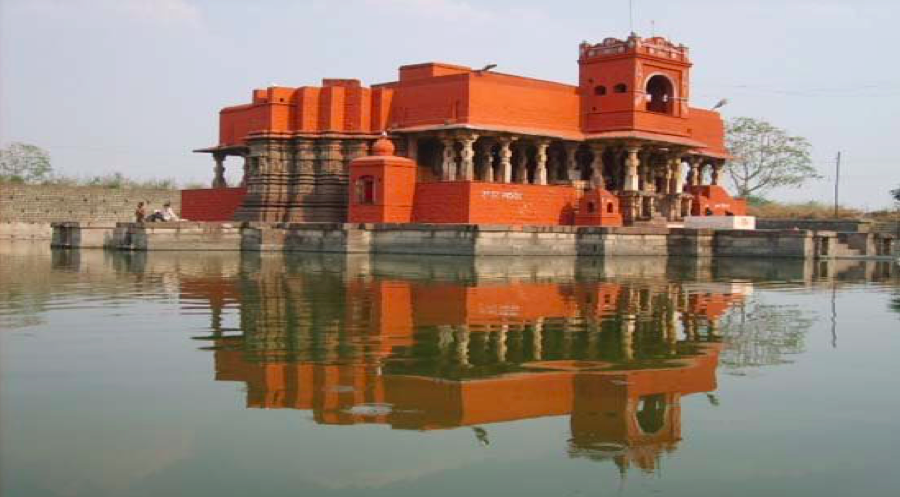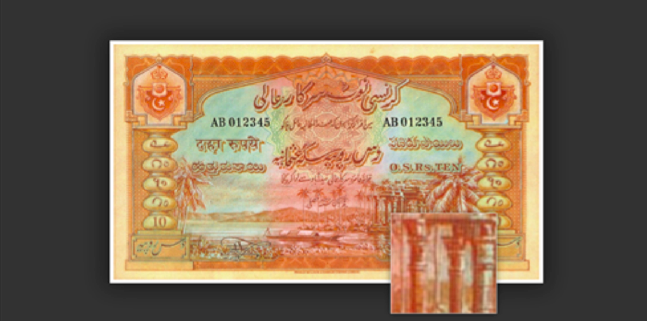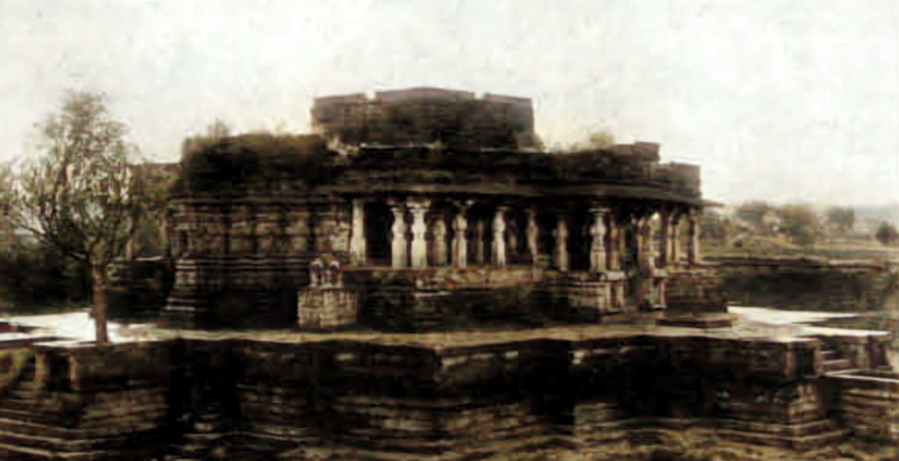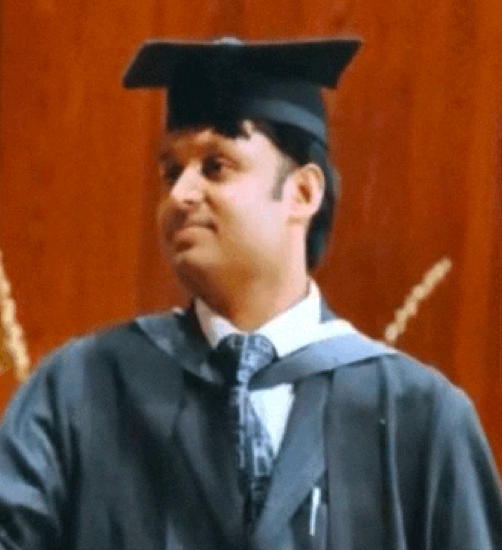Hyderabad is a jewel of India. The credit of making Hyderabad a jewel in the crown of India goes to its most visionary ruler – His Exalted Highness (HEH) Nizam VII Nawab Sir Osman Ali Siddiqui Khan Bahadur. The Nizam left an indelible mark on the history of India as he transformed Hyderabad into a utopian welfare state. He shared power with his subjects. Maharaja Kishen Pershad as the Prime Minister and other Hindu ministers were always in the scheme of things. Raja Bahadur Venkatrama Reddy was the Police Commissioner of Hyderabad. The secular Nizam called Hindus and Muslims as his two eyes and he lived by that example. The Nizam gave generous grants to Hindu temples as evident from the royal decrees (firmans). He gave a huge financial grant to Benaras Hindu University when Prime Minister of India Narendra Modi was not even born! He gave prominence to Hindu temples to such an extent that a ten rupee currency note from his era bears the picture of a temple called Khanqah Deval. The historians did not keep track of the temple on the note. The name of the temple was not mentioned on the note. This became a sort of a puzzle for historians and currency enthusiasts during the past many decades. It seems the puzzle is going to be solved soon if one goes by the forensic research recently.
BeyondHeadlines brings to the table this enigmatic story of dedicated research by Ahmed Askander, who is a Digital Forensics Analyst, Researcher, and Heritage Buff of Indian origin based in London. Identifying old historical photographs either of objects or persons is a herculean task compared to the identification of modern digital photographs that contain a vast range of metadata such as ownership attribution, filename, description, camera identification, location, created, modified and access times, etc. Digital Forensic scientists employ specialized techniques, methodologies, and tools to extract digital evidence from digital photographs, audio, and video in cases related to child abuse, pornography, vehicle identification, weapons identification, document forgery, etc.
But compared to a digital photograph, an analogue unidentified photograph can offer a frustrating puzzle for forensic scientists and historians to identify and authenticate, the subject of the photograph, who, where, when, how, and why was it taken? A similar scenario recently surfaced after UNESCO declared Ramappa Temple of Telangana as a world heritage site. Following which Hyderabad city heritage expert, numismatist, and banker Amarbir Singh disclosed that a draft Rs.10 currency note of His Exalted Highness The Nizam of Hyderabad Deccan’s Government in 1923 had the historic Ramappa temple on its reverse and another unidentified temple on the obverse. Amarbir says “The temple is obviously from within the erstwhile HEH The Nizam’s Dominions and is yet to be identified despite several efforts by numismatists and heritage experts”. Amarbir even offered to gift a 100-year old silver coin from HEH The Nizam’s era to anyone who can help identify the temple that is on the obverse side of the draft Rs.10 currency note. Following the announcement, many people contacted Amarbir Singh but all turned out to be only ‘false alarms’.
Ahmed Askander took up Amarbir Singh’s challenge to identify the obverse photo on the draft Rs.10 currency of Nizam’s era. After having a quick WhatsApp chat with Amarbir Singh, Ahmed straight away started the research to identify the obverse photo that has become a puzzle for historians for decades. Ahmed gained access to several antiquarian books, reports, manuscripts, and artifacts from his own library collection as well as accessing them from British Library, London. The vast majority of internet search engines such as Google Search returns voluminous search hits depending upon its relevance ranking algorithm. So, it is like searching for a needle in a haystack. Taking up a daunting challenge after initial frustration, Ahmed narrowed down his research using digital forensic text string searching techniques usually employed by digital forensic scientists to locate hits relevant to investigative objectives more quickly using specialized tools, techniques, and methodologies.

KHANQAH DEVAL OF BIR (Old) or KANKALESHWAR TEMPLE OF BEED (Present) AS CAN BE SEEN TODAY IN MAHARASHTRA STATE
After identifying and analyzing the data that is relevant to his research, Ahmed says he was able to identify the obverse photo on the draft Rs.10 currency of Nizam’s era as a well-known religious structure that is located in Bir (modern name Beed) in the erstwhile State of HEH the Nizam’s Dominions. It is to be noted that Beed, Aurangabad, and some other areas presently in Maharashtra State were under the HEH The Nizam’s Dominions during the British rule in India. As per the research and analysis of Ahmed, during the Nizam’s era, an Annual Report of the Archaeological Department of HEH the Nizam’s Domonions was prepared by eminent historians, archaeologists, and foreign experts such as from Italy and other European countries. One such annual report for the year 1920-21 A.D — corresponding to Fasli year 1330 was prepared by Ghulam Yazdani, Director of Nizam’s Archaeological Department whose services were permanently acquired during the year by HEH the Nizam’s Government in accordance with the proposal of the Government of India. Director Yazdani visited Medak, Gulbarga, Bir, and Aurangabad during the year and frequently traveled to Ajanta to watch the progress of the operations there. Yazdani and his team surveyed certain important archaeological monuments in the Ashti and Patoda Taluqas of the Bir District during that year. The report contains an interesting description of these monuments along with 54 new photographs and a large survey plan of the Golconda tombs was also prepared. As per the report of Yazdani, the expenditure on the conservation of monuments amounted to O.S. (Osmani Sikka) Rs.13,728 in addition to which a sum of O.S. Rs. 60, 215 was spent during the year on the repair of the Ajanta frescoes. The expenditure on the maintenance of the Department amounted to O.S. Rs. 29,900 as against O.S. Rs. 22,380 in the previous year. The Nizam Government was pleased to express its pleasure and satisfaction for the excellent work of Yazdani and to record their appreciation of Sir John Marshall’s valuable help to the Archaeological Department.
Ahmed analyzed that writing about Bir. Yazdani praised the old town of Bir that possesses a vast array of beautiful buildings, some of which ranked among the best monuments of the Nizam’s Dominions. Talking about the Hindu temples first, Yazdani nominated Khanqah Temple as the most important building of that class and most pleasing structure built in the middle of a tank and possessing exquisite carvings. Yazdani wrote that the tank is almost square in the plan of size 278’ X 252’ and along its sides is a fine parapet of chiseled masonry, broad enough to serve the purpose of a side-walk. After descending a flight of steps from the parapet one reaches another paved walk, almost 61/2’ broad, running along the sides of the tank. He further writes that originally this seems to have been built for the convenience of bathers since the sacred waters of the tank flowed up to the edge of the pavement. The temple is approached by a causeway of solid masonry about 62 feet in length. The base of the temple is 4 feet higher than the causeway and a flight of steps leads the visitors to a platform which contains a clear space of 17 ft. 6 in. all around the building. The exterior of the temple is star-shaped; the walls bear a wealth of carvings consisting of floral designs of the most delicate pattern with images of Hindu Gods and Goddesses arranged in beautiful niches.
Yazdani further writes that to obtain access to the interior of the temple the visitor must ascend a few more steps; he then reaches a portico which leads to a circular mandapam (hall) 21’ 6” across. The roof of the hall is domical in shape, supported on 24 pillars. The carvings on pillars and ceiling are exquisite and in the case of the latter consist of a series of circular bands which decrease in size inwardly. Yazdani also identified that the construction of the roof was not on the principle of a true vault but consists of overlapping slabs arranged above the other and outwardly assuming the form of a dome.
At the northern and southern ends of the hall are antechambers (each measuring 9’6” X 3’9”), adjoining which are sanctuaries square in plan and measuring 9’6” each way. The northern sanctuary contains a beautifully carved seat evidently meant for the principal icon of the temple, which has now disappeared. The southern sanctuary contains the image of a female deity; probably Durga, for the temple was dedicated to Shivite worship. The pillared rooms at the four corners of the building seem to have been added at a subsequent date, for their carvings are plain and the floors irregular and rough. According to Yazdani, The History of Firishta contains a passage in which the structure’s name is given as “Khanqah Deval”. The temple bears no inscriptions, but from the style of its architecture, it seems to have been built from the 10th to 12th centuries A.D.
Ahmed Askander despite carrying out in-depth research about the Khanqah Deval, still could not identify and attribute the Khanqah Deval to the photo on the obverse draft of Rs.10 Nizam’s currency note. The widely used Google search engine gave voluminous results but none of any importance to identify Khanqah Deval. So, Ahmed once again employed digital forensics text-string search techniques, analyzed the present-day Maharashtra Government’s archaeological information, scanned numerous YouTube videos, and finally came to a conclusion that the ancient “Khanqah Deval” of Bir is the present-day “Kankaleshwar Temple” of Beed. It appears that during the last 100 years the name of the structure and its locality name has been changed and not only that the structure itself has been completely changed with the addition of new structures over the roof and its surroundings. Ahmed strongly believes that this is the very reason due to change in the original structure and its name and locality, historians for a long time have failed to identify the obverse photo on the draft Rs. 10 Nizam’s currency note. Even the Maharashtra Government’s Archaeological Department Website and the modern Britannica website identify this structure as “Kankaleshwar Temple” but not as “Khanqah Deval” its original historical name.
Ahmed was still not satisfied with his research after finding all these information as he wanted to accurately attribute the “Khanqah Deval” or the Kankaleshwar Temple as the same temple that is printed on the observe of the draft Rs.10 currency of Nizam’s era. Ahmed once again employed digital forensic and image editing techniques, methodologies, and tools to analyze and compare the present-day Kankaleshwar Temple with the photo on the obverse of the draft Rs. 10 currency note of Nizam’s era, and with the photos obtained from Yazdani’s annual report. Some of the digital forensic and image editing techniques Ahmed employed to analyze and identify the temple are through close visual observation of the present photos and videos and comparing it with the obverse photo on the draft currency and photos in Yazdani’s report, using specialized digital forensic software for photo forensics to enhance, magnify and improve the quality of the photos, reducing the blurring, sharpening, contrast adjustment, image splicing (composition of an image using parts of one or more parts of images), cloning (or copy-move, the replication of a portion of the same image), super-imposing the images over one another, etc. After extensive analysis, Ahmed Askander concluded that the erstwhile “Khanqah Deval” is the present day “Kankaleshwar Temple” that is on the obverse of the draft 10 Rs. currency note of Nizam’s era and mentioned in Yazdani’s annual archaeological report for Nizam’s Government. It may be recalled that Thomas De La Rue, a British Company designed the draft Rs 10 currency for the Nizam’s Government, but due to some unknown reasons, De La Rue Company could not get the contract to print HEH The Nizam’s Hyderabad currency. Later Waterlow and Sons of England printed the Nizam’s currency from 1917 to 1936 and after that, it was printed at the Currency Note Press at Nasik and Government Press at Malakpet in Hyderabad, India as per Amarbir Singh.
Ahmed Askander calls upon Hyderabad’s heritage expert and numismatist Amarbir Singh, Dr. Safiullah, eminent historian, and other experts to authenticate his research and findings. Finally, it seems the nearly multi-decade old unidentified photograph on the obverse of draft Rs. 10 currency note of Nizam’s Government that was a frustrating puzzle for historians appears to have been solved and identified using modern digital forensic techniques by Ahmed Askander. If Ahmed’s findings are confirmed and proved, then Amarbir Singh’s numismatic collection will be reduced by one coin as he offered a 100 years old Nizam’s silver coin from his collection to anyone who could identify the photo on the obverse of draft Rs. 10 currency note of His Exalted Highness The Nizam of Hyderabad’s Government.
Dr.Andrew Fleming, Deputy Commissioner of UK in India for Telangana and Andhra Pradesh will be happy to know that decades old puzzle has been solved that further fortifies the strong historical business relationship between Britain and India. Last time, when my friend Dr. Andrew Fleming met me in Muscat two years ago, he had a detailed discussion with me about the heritage of Hyderabad and Telangana. The diplomat who travels in his free time is very well-conversant with the heritage scene of Hyderabad.
FORENSIC SIMILARITIES BETWEEN OBVERSE PHOTO OF DRAFT RS. 10 CURRENCY OF HEH THE NIZAM’S DOMINION, PHOTOS FROM GHULAM YAZDANI’S ANNUAL ARCHAEOLOGICAL REPORT TO HEH THE NIZAM’S GOVERNMENT AND PRESENT-DAY KANKALESHWAR TEMPLE:
1. The structure is in the middle of a square pond (water).
2. The construction of the roof of the Khanqah Deval as seen in Yazdani’s photos and on the obverse draft Rs.10 currency note of Nizam’s era is not on the principle of a true vault but consists of overlapping slabs arranged one above the other and outwardly assuming the form of a dome.
3. The base of the temple is at least a few feet above the causeway and a flight of steps leads to the base.
4. The carvings on pillars are exquisite and similar – mostly in a damaged state now.
5. The walls bear a wealth of carvings consisting of floral designs of the most delicate pattern with images of Hindu Gods and Goddesses arranged in beautiful niches most of them are now in a damaged state.
In conclusion, it has been observed that several changes have been made to the original Khanqah Deval of Bir in the last 100 years resulting in extensive irreplaceable damage due to the addition of new construction to the archaeological monument. This is the story of Khanqah Deval of Bir which is today famously known as the Kankaleshwar Temple of Beed. Finally, the ten rupee note puzzle is going to be resolved soon. This laborious research by Ahmed Askander firmly establishes the impeccable secular credentials of HEH Nizam VII Nawab Sir Osman Ali Siddiqui Khan Bahadur. It is also a living testimony of harmony and pluralism that Hyderabad is known all over the world.
(Ahmed Askander can be reached at zuparen@protonmail.com).
























